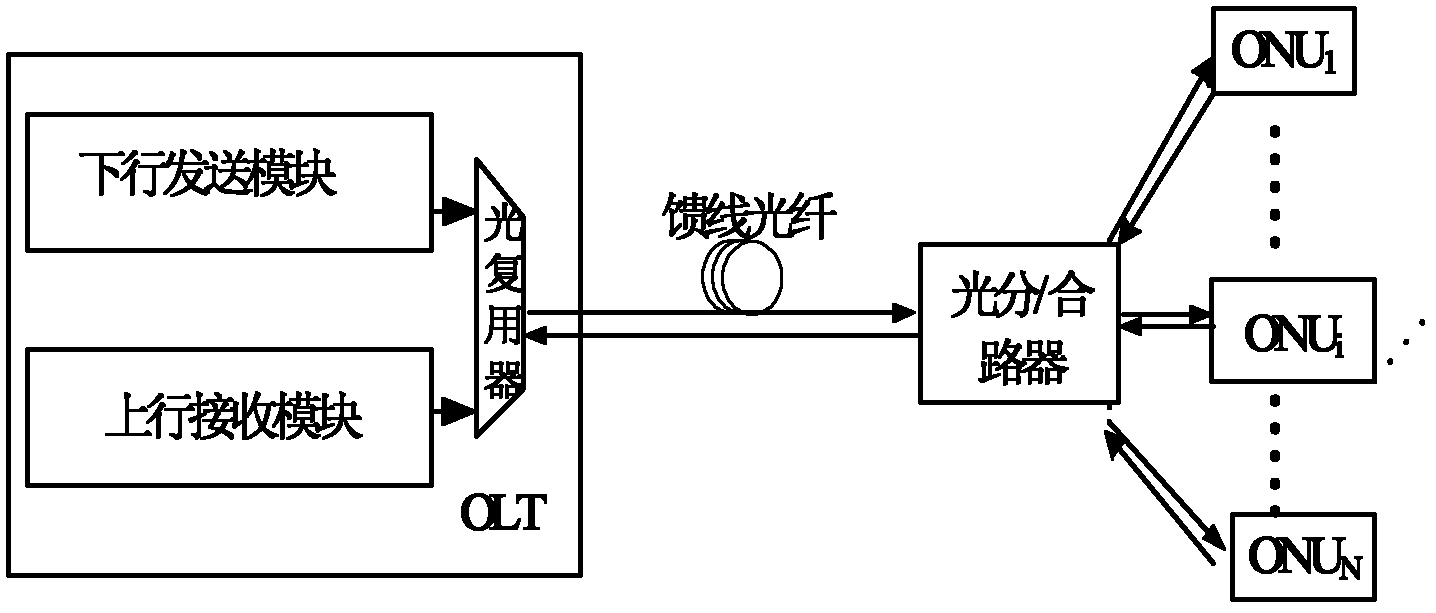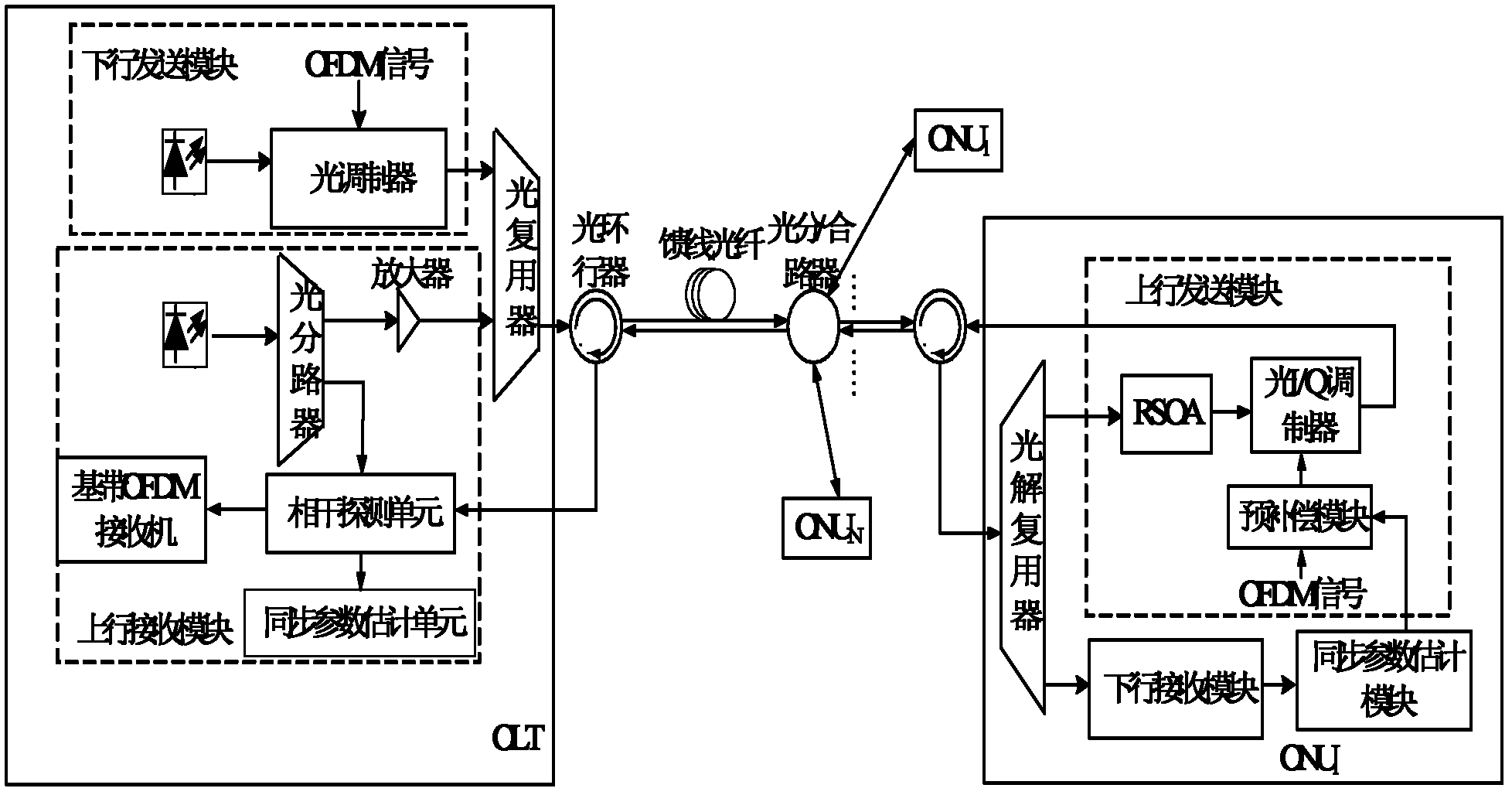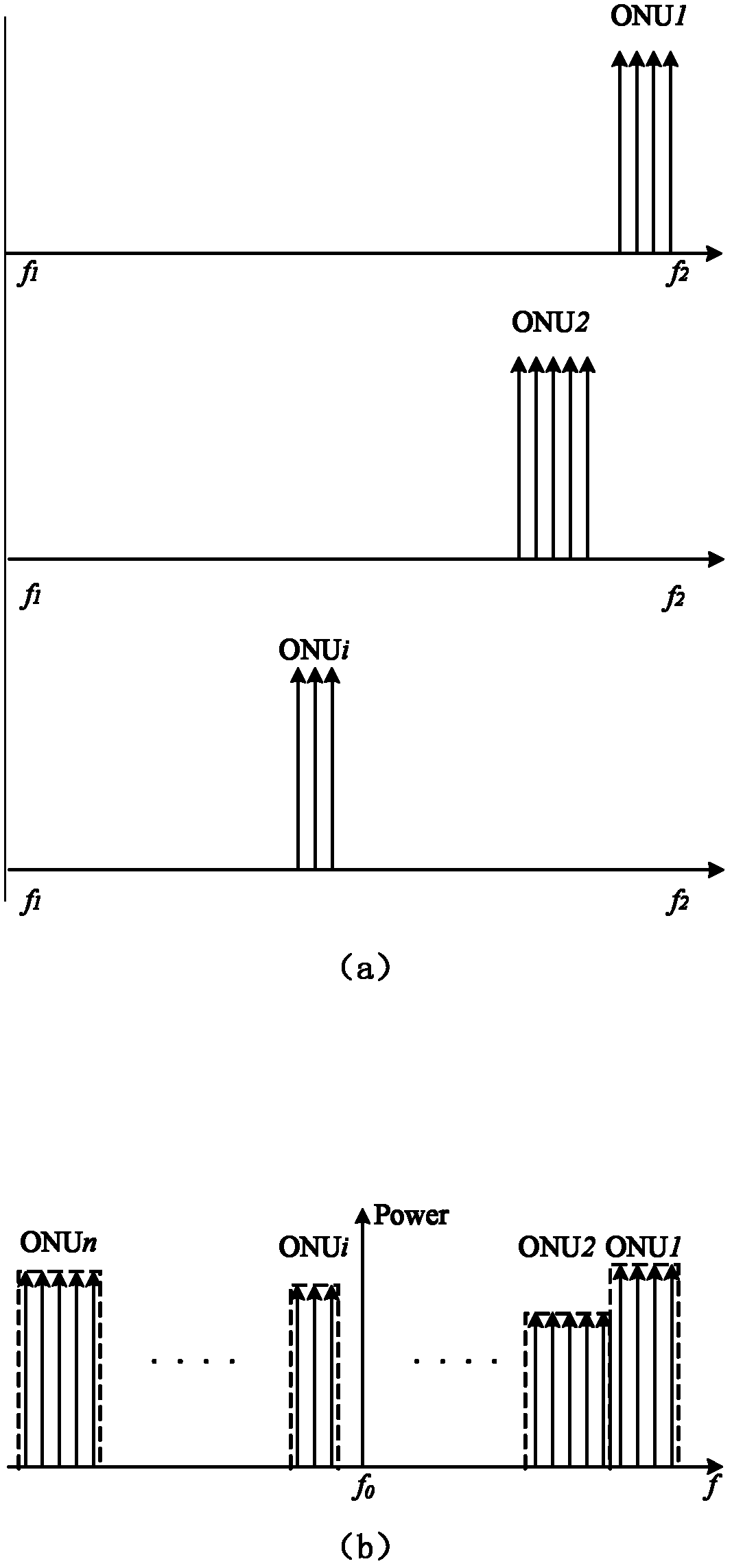Orthogonal frequency division multiplexing passive optical network system
A passive optical network and orthogonal frequency division technology, applied in the field of communication, can solve problems such as the inability to realize the unified reception of multiple ONU unit data streams, the difficulty of implementing the upstream receiving module, and the complexity of MAC protocol control, etc., to achieve complex MAC control The effect of low density, flexible allocation mechanism, and low hardware cost
- Summary
- Abstract
- Description
- Claims
- Application Information
AI Technical Summary
Problems solved by technology
Method used
Image
Examples
Embodiment Construction
[0031] Downlink transmission means that the optical cable terminal equipment (OLT) in the CO (Central Office) sends information to multiple user-end optical nodes (ONU) through one or several 1:N passive optical splitter / combiners; Transmission refers to sending data from ONU to OLT. Only optical fiber and passive optical devices are used in the network between OLT and ONU.
[0032] Such as figure 2 As shown, the total number of ONUs in the PON is N. The OLT includes a downlink sending module, an uplink receiving module, and an optical multiplexer; each ONU includes an optical demultiplexer, a downlink receiving module, an uplink sending module, and a synchronization parameter estimation module.
[0033] The downlink transmission module includes a downlink optical laser and an optical modulator; the downlink data modulated by OFDM flows through the optical modulator and then is transmitted to each ONU unit through the feeder fiber; the downlink optical laser provides an opt...
PUM
 Login to View More
Login to View More Abstract
Description
Claims
Application Information
 Login to View More
Login to View More - R&D
- Intellectual Property
- Life Sciences
- Materials
- Tech Scout
- Unparalleled Data Quality
- Higher Quality Content
- 60% Fewer Hallucinations
Browse by: Latest US Patents, China's latest patents, Technical Efficacy Thesaurus, Application Domain, Technology Topic, Popular Technical Reports.
© 2025 PatSnap. All rights reserved.Legal|Privacy policy|Modern Slavery Act Transparency Statement|Sitemap|About US| Contact US: help@patsnap.com



